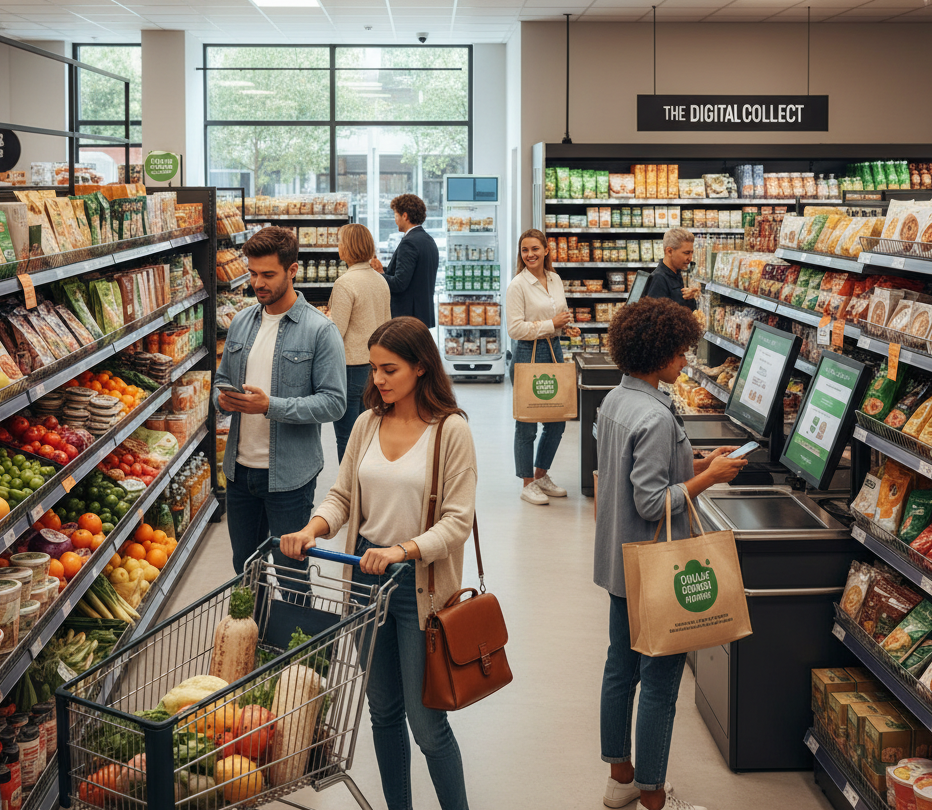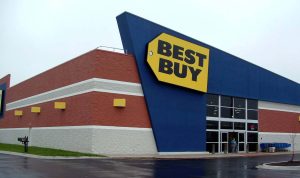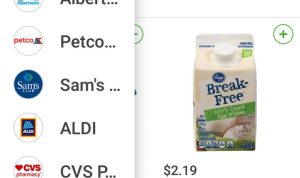In an era defined by convenience and technological advancement, the groceries and food sector has undergone a profound transformation. From traditional brick-and-mortar stores to sophisticated online platforms, the way we buy and sell our daily sustenance is constantly evolving. This article delves into the dynamic landscape of sales and transactions in the groceries and food industry, exploring key trends, challenges, and opportunities for businesses looking to thrive in the digital age.
The Shifting Paradigm: From Physical Carts to Virtual Checkouts
For decades, grocery shopping was a ritual. Pushing a cart through aisles, comparing labels, and interacting with store staff were integral parts of the experience. While this traditional model still holds a significant share, the advent of e-commerce has introduced a powerful alternative: online grocery shopping.
The COVID-19 pandemic acted as a major catalyst, accelerating the adoption of online grocery services globally. Consumers, faced with lockdowns and health concerns, rapidly shifted their habits, discovering the convenience of having fresh produce, pantry staples, and gourmet meals delivered directly to their doorstep. This surge in demand has solidified online grocery as a permanent fixture in the retail landscape, forcing businesses to adapt or risk being left behind.
Key Drivers of Change in Groceries & Food Sales
Several factors are reshaping how sales and transactions occur in this vital sector:
- Technological Innovation: From AI-powered recommendation engines that personalize shopping experiences to blockchain for supply chain transparency, technology is at the forefront. Mobile apps, contactless payments, and automated warehousing systems are streamlining operations and enhancing customer satisfaction.
- Changing Consumer Behavior: Modern consumers prioritize convenience, speed, and ethical sourcing. They are more informed than ever, seeking transparency about where their food comes from and how it’s produced. This drives demand for organic, locally sourced, and sustainable options.
- The Rise of Delivery Services: Third-party delivery platforms (e.g., Instacart, DoorDash, Uber Eats) have democratized access to a wider range of food options, from restaurant meals to full grocery hauls. These platforms act as intermediaries, handling logistics and expanding the reach of food businesses.
- Personalization and Customization: Consumers expect tailored experiences. Subscription boxes for meals or specific dietary needs, personalized promotions, and customized product recommendations are becoming standard.
- Focus on Health and Wellness: A growing awareness of diet’s impact on health has led to increased sales of healthy snacks, plant-based alternatives, and functional foods. Businesses that cater to specific dietary requirements (e.g., gluten-free, vegan) are seeing significant growth.
Navigating the Transactional Maze: Online vs. Offline
The interplay between online and offline channels creates a complex transactional environment.
Online Transactions:
- Benefits: Convenience, broader selection, personalized offers, detailed product information, easy price comparison, home delivery.
- Challenges: High delivery costs, cold chain logistics, ensuring freshness and quality upon arrival, “last mile” delivery efficiency, managing returns of perishable goods.
Offline Transactions:
- Benefits: Sensory experience (touch, smell), immediate gratification, social interaction, ability to inspect products, impulse purchases.
- Challenges: Limited reach, parking issues, queue times, higher operational costs for physical space, less data for personalization compared to online.
Many successful businesses are adopting an “omnichannel” strategy, seamlessly integrating online and offline experiences. This might involve “click and collect” services, where customers order online and pick up in-store, or in-store kiosks that provide digital product information and promotions.
Optimizing for Sales & Transactions: Strategies for Success
For businesses in the groceries and food sector, optimizing sales and transactions requires a multi-faceted approach:
- Robust E-commerce Platform: Invest in a user-friendly, secure, and scalable e-commerce website or app. Features like easy navigation, high-quality product images, detailed descriptions, and clear calls to action are crucial.
- Efficient Supply Chain Management: Given the perishable nature of food, an optimized supply chain is paramount. This includes inventory management, cold chain logistics, and reliable last-mile delivery solutions to ensure product freshness and timely arrival.
- Data-Driven Personalization: Leverage customer data to understand purchasing habits, preferences, and dietary needs. Use this insight to offer personalized promotions, product recommendations, and targeted marketing campaigns.
- Seamless Payment Options: Offer a variety of secure payment methods, including credit/debit cards, mobile wallets, and alternative payment solutions. A smooth checkout process reduces cart abandonment.
- Exceptional Customer Service: Online or offline, excellent customer service builds trust and loyalty. This includes responsive support for order issues, easy return policies (where applicable), and feedback mechanisms.
- Sustainable Practices: Emphasize sustainability in sourcing, packaging, and waste reduction. Consumers are increasingly willing to pay more for products from environmentally and socially responsible businesses.
- Strategic Partnerships: Collaborate with local producers, third-party delivery services, or complementary businesses to expand reach and offerings.
- SEO and Digital Marketing: To ensure your products are found, invest in search engine optimization (SEO) for your website. This means using relevant keywords (e.g., “organic groceries online,” “fresh food delivery,” “vegan meal kits”) in your content, product descriptions, and metadata. Engage in social media marketing and targeted online advertising.
- Subscription Models: Explore subscription services for recurring purchases (e.g., weekly meal kits, coffee subscriptions) to foster customer loyalty and predictable revenue streams.
The Future of Groceries & Food Transactions
The trajectory of the groceries and food sector points towards even greater integration of technology, personalization, and sustainability. We can anticipate:
- Further Automation: From robot-assisted picking in warehouses to drone delivery in certain areas, automation will continue to reduce costs and increase efficiency.
- Hyper-Personalization: Advanced AI will enable truly individualized shopping experiences, predicting needs before customers even realize them.
- Increased Focus on Health and Traceability: Consumers will demand more detailed information about the origin, nutritional content, and environmental impact of their food. Blockchain technology will likely play a larger role in providing this transparency.
- Experiential Retail: Physical stores may evolve into experiential hubs, focusing on cooking classes, tasting events, and community gathering, while core transactions increasingly shift online.
Conclusion
The sales and transactional landscape in the groceries and food sector is vibrant, competitive, and continuously evolving. While challenges persist, particularly around logistics and maintaining freshness, the opportunities for innovation and growth are immense. Businesses that embrace technology, prioritize customer convenience, commit to sustainability, and strategically optimize their online presence will be well-positioned to capture a significant share of this ever-expanding market. By understanding the digital aisles and mastering the art of seamless transactions, food businesses can ensure they remain at the heart of our daily lives.







